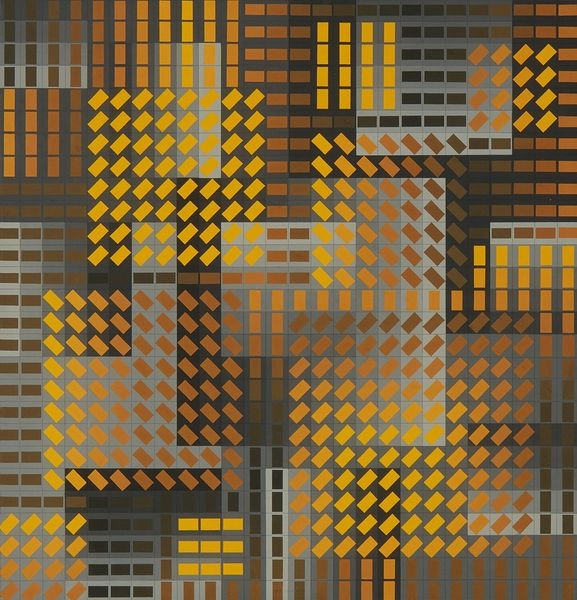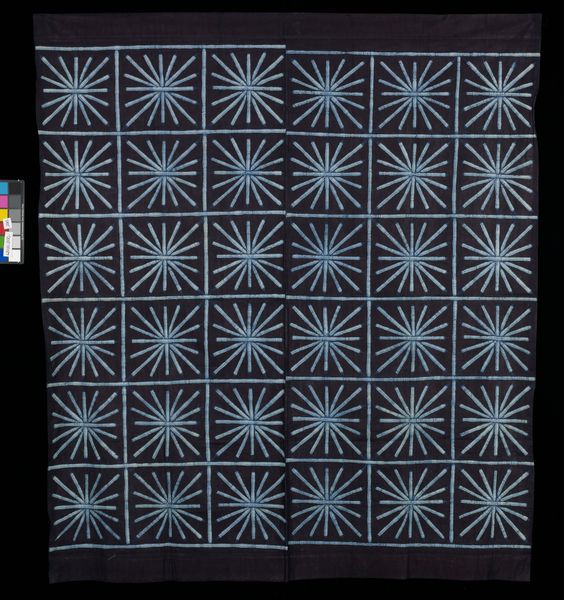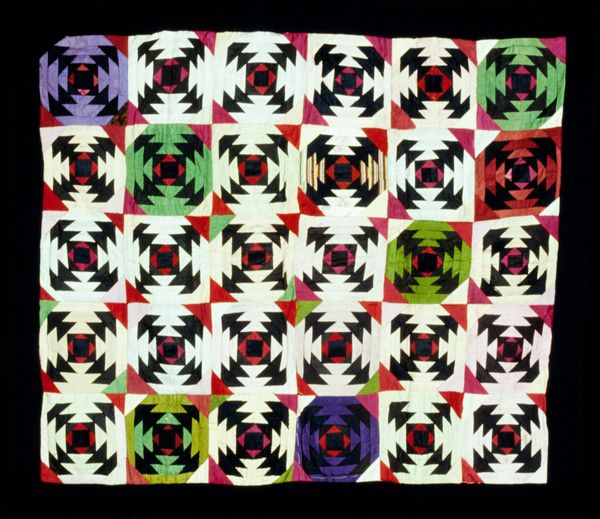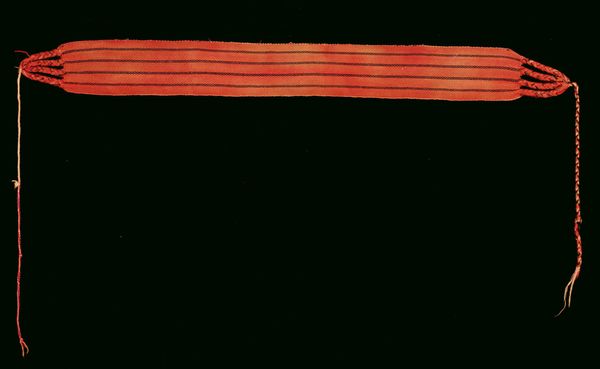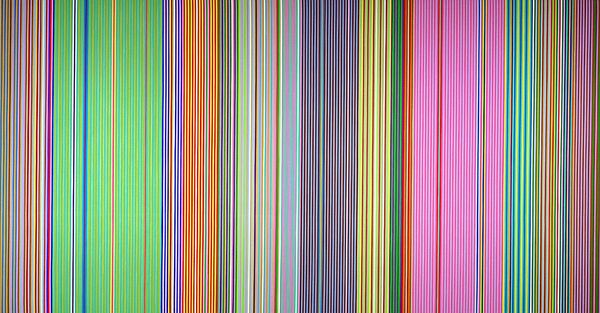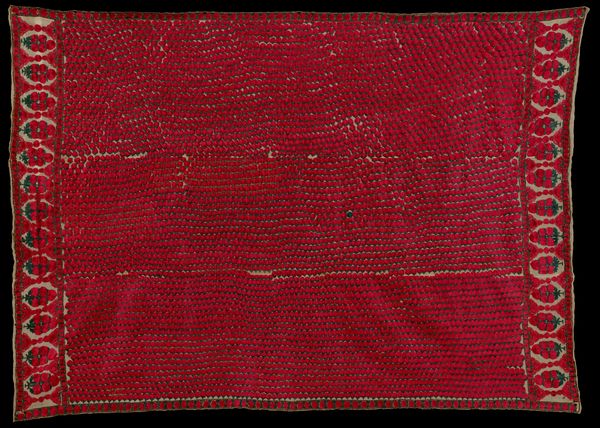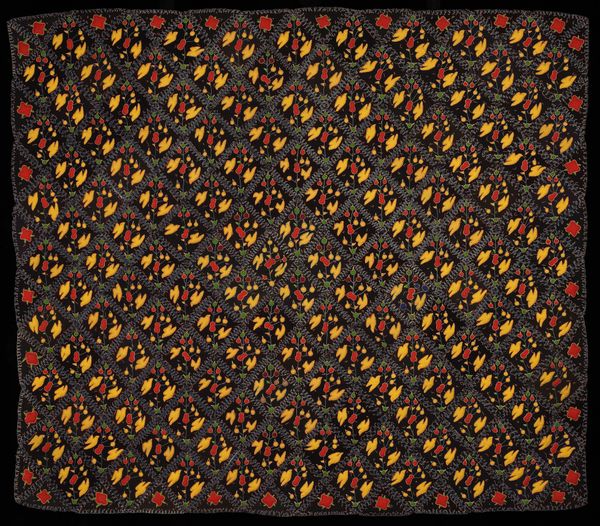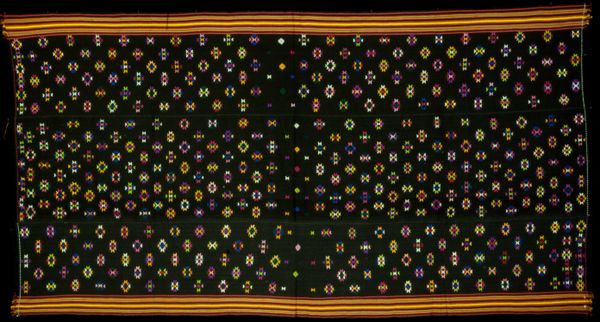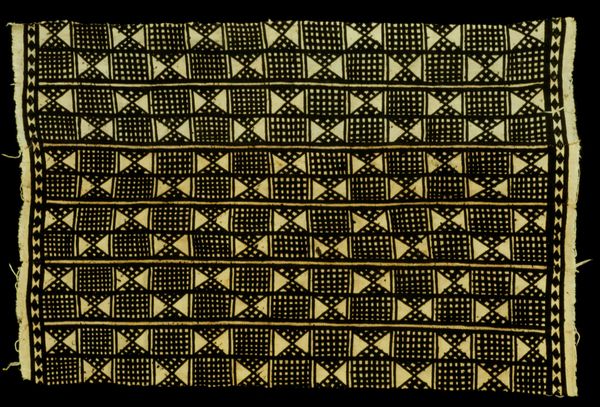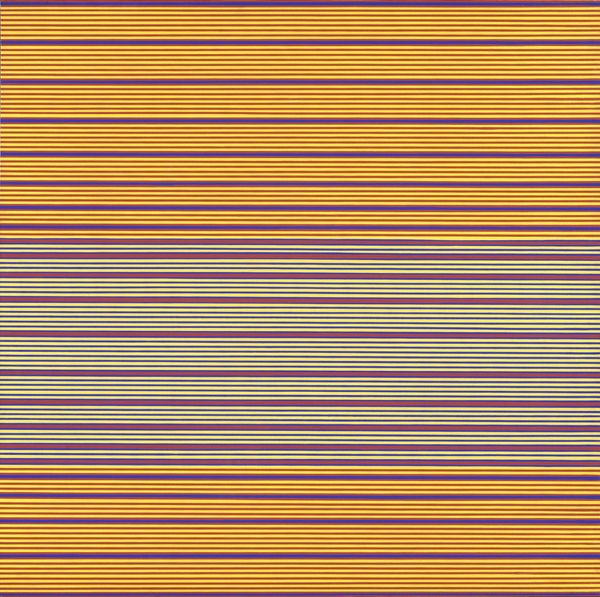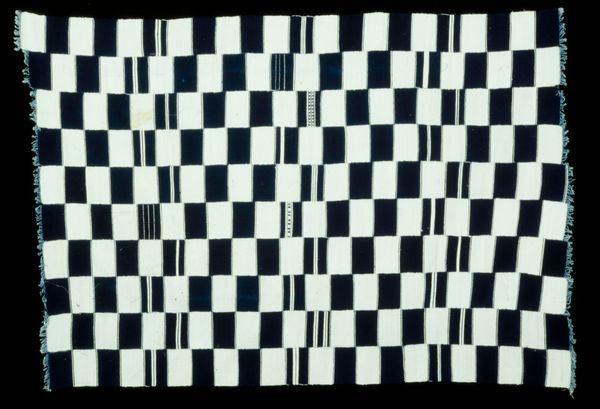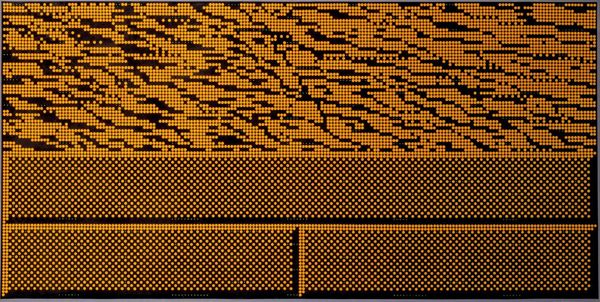
weaving, textile
#
weaving
#
textile
#
geometric
Dimensions: 70 1/2 x 47 1/4 in. (179.07 x 120 cm) (uneven)
Copyright: Public Domain
Curator: I’m drawn to the striking visual energy emanating from this cotton textile. The piece is known as “Panel,” created around the 20th century by an anonymous artist. What is your immediate take on this textile? Editor: A burst of radiant sunsets against stark, coded darkness. It reminds me of ritualistic hangings or banners found in spiritual settings, invoking both safety and caution, maybe a call for vigilance? Curator: Interesting. It speaks to the Pattern and Decoration movement, but also draws strong connections to African art traditions, particularly in the use of bold geometric patterns, rhythmic repetitions, and potent symbolism inherent in its design. This piece really challenges Eurocentric artistic traditions. Editor: The use of lines and geometry feels like a very purposeful act of visually conveying an existing non-western order in social or maybe natural reality, almost like an ancient, indigenous form of data visualization or infographic. Curator: Exactly. And given the anonymous nature of the creator, it suggests a communal practice, possibly born out of resistance or a means of cultural preservation. The medium itself, textile, historically occupies a marginalized position within Western art hierarchies. Editor: I am intrigued by those clustered white tick-like symbols. Do they mean anything beyond the visual repetition? Is that some writing system? Are there references to cultural heritage? Curator: While we may not know their exact meaning, such symbols resonate deeply within many African cultures. This piece functions on many levels—as adornment, as cultural affirmation, and potentially as coded messaging. It challenges the authority of singular artistic voices and calls for greater inclusion and nuanced art historical analysis. Editor: Thinking about its visual language, "Panel" creates a powerful push and pull—it makes you contemplate on history and culture and hidden realities, perhaps meant for those with "eyes to see." Curator: The panel becomes more than just woven material; it becomes a testament to the endurance and adaptation of cultural expression. It makes you ponder the intersection of artistic heritage, social justice and cultural survival. Thank you. Editor: Thank you; it offers a potent glimpse into complex cultural continuities.
Comments
No comments
Be the first to comment and join the conversation on the ultimate creative platform.
